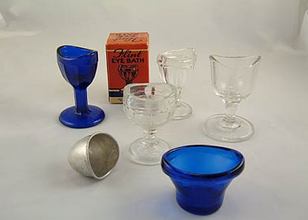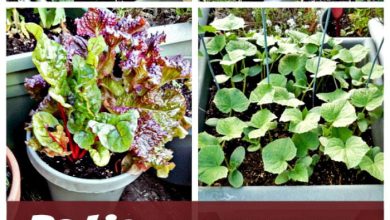Chlorosis in Plants: [How to Detect, Combat and Control It]

What is chlorosis in plants?
Chlorosis consists of the yellowing of the leaf tissue of plants due to an iron deficiency and is generally associated with limestone soils, which occupy approximately 30% of the earth’s surface (Chen et al., 1982).
 Iron, despite being the fourth most abundant chemical element in the planet’s crust after Oxygen, Silicon and Aluminum, constitutes around 2% of the earth’s mineral soils.
Iron, despite being the fourth most abundant chemical element in the planet’s crust after Oxygen, Silicon and Aluminum, constitutes around 2% of the earth’s mineral soils.
In soils with a high pH, (such as those with a high carbonate content), the concentration of inorganic iron species in the soil solution is around 10-10 M, being the concentration for optimal plant growth between 10-6 and 10-5M.
There is another type of chlorosis, called interveinal, in which the veins of the leaf remain green, while the intermediate tissue turns yellow.
How can it be detected?
 There are a series of conditions and symptoms that can indicate that the plant has chlorosis, which vary depending on several factors.
There are a series of conditions and symptoms that can indicate that the plant has chlorosis, which vary depending on several factors.
From the alkalinity of the soil. The higher the pH, the more chlorotic the plant will be. How long the plant has suffered from chlorosis. The longer chlorosis lasts on the plant, the more serious it becomes.
Generally, chlorosis in plants begins as a very mild discoloration (light green to lime green) in the interveinal tissue while yellowing indicates a more serious problem. It has been determined that in some cases only one part of the plant becomes chlorotic.
It can also be detected because the plant as a whole or the affected areas are stunted or stop producing flowers and fruits. Other times, the chlorotic leaves get sick or scald.
When a plant has severe chlorosis, yellowing of the leaf nerves is observed, followed by necrosis or death of the leaf, then the branch and, finally, the plant as a whole.
What Causes Chlorosis?
 Studies carried out indicate that damaged, compacted roots, high alkalinity and nutritional deficiencies of the plant, as well as insufficient drainage are possible causes of chlorosis.
Studies carried out indicate that damaged, compacted roots, high alkalinity and nutritional deficiencies of the plant, as well as insufficient drainage are possible causes of chlorosis.
Also nutrient deficiencies can cause chlorosis because the soil is not rich in food or because these are not available due to the high pH (alkaline soil).
It is also possible that the absorption and assimilation of the water and nutrients necessary for the plant does not take place in an optimal way. And, within these deficiencies, iron is one of the most important and common.
Hence, chlorosis in plants caused by the absence or lack of iron, magnesium and zinc is mainly due to the lack of availability of this element in the soil and that the plant cannot replace by other means.
Iron is very necessary for the execution of several enzymatic functions that manage the metabolism and respiration of the plant.
Within the process that plants carry out, iron becomes more insoluble as the soil pH increases above 6.5 to 6.7 (7.0 is neutral; less than 7.0 is acidic; above 7.0 is alkaline).
Also, and in most species, iron can only be absorbed as a free ion (Fe ++) when the pH is between 5.0 and 6.5.
There are other elements that can fix iron in the soil such as calcium, zinc, manganese, phosphorus or copper in large quantities and, therefore, the plant cannot dispose of them.
How can we fight chlorosis?
Know the cause of chlorosis
To carry out an effective treatment of chlorosis in plants and try to avoid its appearance, one must act based on the type of cause that produces it.
Also, nutritional deficiencies can be treated in a number of ways.
Applying foliar nutrients either soluble in water or as chelates to correct the problem for a time, but it will only affect the leaves that are present when the application is made.
Keeping the foliage green will require several treatments each growing season as the leaves that develop and grow later will not receive the benefits.
Treat the trunk
There is another way to combat chlorosis by applying treatment to the trunk. This method is quickly absorbed by the plant and can last for several years. But you must wait 30 days before seeing the first results.
The new foods or nutrients can be incorporated into the tree through the trunk in two ways, piercing the trunk and the number of holes or holes made in the plant will depend on the diameter of the trunk.
- The first method of applying nutrients to the trunk is to tie containers with tubes to the holes. The movement of water in the tree will help carry the nutrients to the trunk and once empty, the holes are removed and plugged.
- The second system consists of nailing plastic capsules into the holes, which are designed to remain on the tree.
To apply chlorosis treatments it is recommended to hire a professional to do the work on the logs.
Treat the soil
 Another method of treating chlorosis is through soil treatment. A soil test must first be done to determine pH as well as nutrient availability.
Another method of treating chlorosis is through soil treatment. A soil test must first be done to determine pH as well as nutrient availability.
With soil testing, the pH can be corrected and the necessary nutrients applied by drilling holes in the soil at a 45 degree angle starting three to five feet from the trunk and reaching the full height of the tree.
What is necrosis in plants?
As its name implies, necrosis is the death of tissue, produced by the drying and discoloration of the plant’s organs.
Necrosis is the result of an advanced stage of chlorosis that begins at the apex and edge of old leaves.
Products to treat chlorosis

Compo 250 g Chelate, Antichlorosis Greener, EDDHA 13% Water Soluble Iron, Including Measuring Spoon, Black
- Iron chelate EDDHA 13% soluble in water for the prevention and correction of iron chlorosis; great purity and …
- It prevents the yellowing of the leaves due to a lack of chlorophyll and favors a healthier and more vigorous development of the plant
- Read the instructions on the packaging carefully before using the product; how to use, always dilute in water and apply …
- Respect the dose indicated on the package according to the type of plant; use the measuring spoon, 5 g
Last update on 2021-06-09 / Affiliate Links / API Images for Affiliates

CULTIVERS Iron Chelate Ecological Fertilizer 1 Kg. Greening antichlorosis. Fundamental Nutrient for Plants (6% Fe-EDDHA ortho ortho 4.8%). Force Fe, Green
- It is a highly dissolving chelate, which does not cause clogging problems in irrigation systems.
- FORCE-Fe ECO is a fundamental nutrient for plants that intervenes in numerous vital functions, among which …
- Root Dose: Adult trees apply 48 grams of tree distributed during the vegetative cycle. For young trees …
- FORCE-Fe ECO is an ecological product designed for all types of plants and trees. COMPOSITION 6% Fe-EDDHA, 4.8 ISOMER …
Last update on 2021-06-09 / Affiliate Links / API Images for Affiliates
Sale

Compo Care of Indoor and Terrace Plants Liquid iron 500 ml
- Iron chelate based fertilizer solution (EDTA)
- High-quality, immediately effective iron chelate solution
- Specially formulated to provide the dose of iron that plants need
- Brand: Compo
Last update on 2021-06-09 / Affiliate Links / API Images for Affiliates
How can chlorosis be controlled?
 Today, almost 100 years after the first studies that began in the 20th century, the problem of chlorosis is still not fully understood and the means available to control it are not entirely satisfactory.
Today, almost 100 years after the first studies that began in the 20th century, the problem of chlorosis is still not fully understood and the means available to control it are not entirely satisfactory.
What all researchers agree on is that iron deficiency affects the yield and quality of many species.
Economic losses are difficult to quantify considering that it is a widespread problem throughout the world. It ranges from the soils of northern China to the southern United States, passing through all the countries of the Mediterranean Sea.
Many sources of iron and methods have been tested over the years, however, technology that is completely effective has yet to be found.
Hagstrom (1984) classified the materials for iron chlorosis correction:
- Inorganic iron compounds.
- Synthetic iron chelates.
- Organic compounds.
- Acidifying soil amendments.
- Industrial by-products and garbage.
For his part, Mortvedt (1991) classified the fertilizers used to correct deficiencies according to the form of application:
- Soil applications.
- Foliar applications.
- Direct injections to the trunk.
- Seed treatments .

![Photo of How to Organize a Garden of 80 meters: [Steps to follow]](https://www.complete-gardening.com/wp-content/uploads/2022/08/how-to-organize-a-garden-of-80-meters-steps-to-follow-390x220.jpg)


